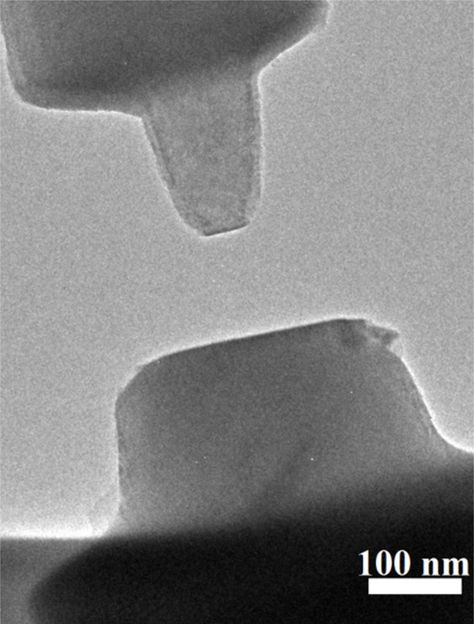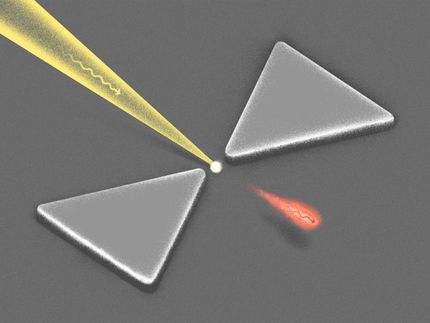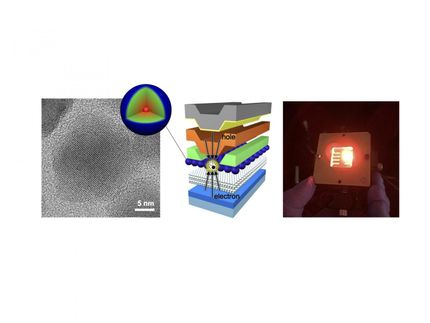'Strained' quantum dots show new optical properties
quantum dots, tiny luminescent particles made of semiconductors, hold promise for detecting and treating cancer earlier. However, if doctors were to use them in humans, quantum dots could have limitations related to their size and possible toxicity.
Scientists at Emory University and the Georgia Institute of Technology have found a way around those limitations by exploiting a property of semiconductors called "lattice strain." By layering materials with different chemical compositions on top of each other, the researchers can create particles with new optical properties.
"The first generation of quantum dots had optical properties that could be tuned by their size," says senior author Shuming Nie, PhD, a professor in the Wallace H. Coulter Department of Biomedical Engineering at Georgia Tech and Emory University. "We have discovered another way to tune quantum dots' properties: by modulating lattice strain."
In addition to their expected utility in biomedical imaging, the new type of quantum dots could find use in optoelectronics, advanced color displays, and more efficient solar panels, Nie adds.
A mismatch between the lattices of the semiconductors making up the inner core and outside shell of the particle creates strain: the core is squeezed and the shell is stretched. This physical strain changes the energies, and wavelengths, of the light produced by the quantum dot.
Previous quantum dots contained cadmium, a toxic heavy metal. Strain-tuned quantum dots can be made mostly of the less toxic elements zinc and selenium, although some cadmium remains at the core of the particle. The particles can be between four and six nanometers wide.
Adding layers of zinc and selenium on top of a cadmium and tellurium core increases the wavelength of light produced as fluorescence by the quantum dots, Nie's team shows. As the core becomes smaller, the shift in the fluorescence wavelength produced by the zinc-containing layers becomes larger.
Strain-tuned quantum dots can be made that emit light at wavelengths in the near-infrared range while remaining small in size. Near-infrared wavelengths around 750 nanometers represent a "clear window" where the human body is relatively transparent, says Andrew Smith, PhD, a postdoctoral fellow in Nie's group and the first author of the paper.
While the newer strain-tuned quantum dots have not been tested in living animals or people, they could probably pass through the kidneys, meaning less toxicity, if they are less than five nanometers in diameter, Smith remarks.
"Using near-infrared wavelengths, there's less difficulty in seeing through the body's tissues," he continues. "Older quantum dots that emit in the near-infrared range are rod-shaped and large enough to get trapped in the kidneys, while smaller particles can both clear the kidneys and have less of a tendency to bind proteins in the blood."
"Core-shell nanocrystals are all expected to have some lattice mismatch between the core and the shell, so the strain effect is a general phenomenon," Nie says. "But this effect was not well understood in the past, and was often not taken into consideration. Our work shows that lattice strain is another key factor that must be considered, in addition to particle size and composition."
Original publication: Smith, A.M., Mohs, A.M and Nie, S.; "Tuning the optical and electronic properties of colloidal nanocrystals by lattice strain."; Nature Nanotechnology 2008.
Topics
Organizations
Other news from the department science

Get the chemical industry in your inbox
By submitting this form you agree that LUMITOS AG will send you the newsletter(s) selected above by email. Your data will not be passed on to third parties. Your data will be stored and processed in accordance with our data protection regulations. LUMITOS may contact you by email for the purpose of advertising or market and opinion surveys. You can revoke your consent at any time without giving reasons to LUMITOS AG, Ernst-Augustin-Str. 2, 12489 Berlin, Germany or by e-mail at revoke@lumitos.com with effect for the future. In addition, each email contains a link to unsubscribe from the corresponding newsletter.
Most read news
More news from our other portals
Last viewed contents
Astron_Ltd
Researchers 'watch' crystal structure change in real time
Eugene_Concrete
HLA-Cw*16
Sung_Shin
OLCO_Petroleum_Group

Forces that align crystals and help them snap together measured





























































